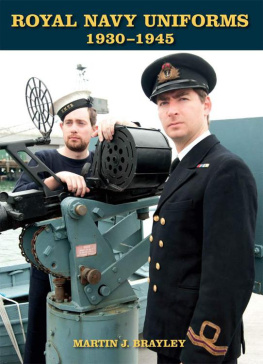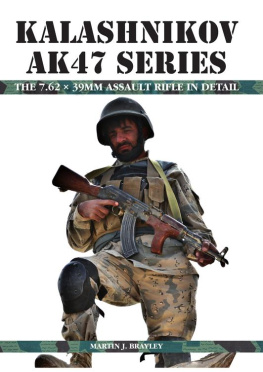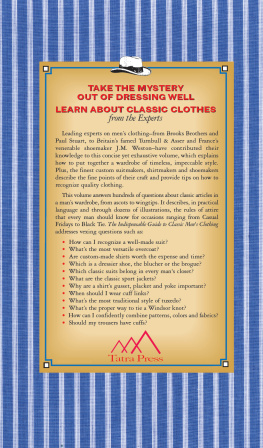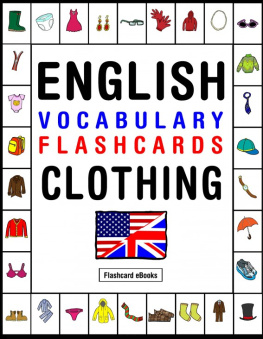
ROYAL NAVY UNIFORMS
1930-1945
MARTIN J. BRAYLEY

THE CROWOOD PRESS
First published in 2014 by
The Crowood Press Ltd
Ramsbury, Marlborough
Wiltshire SN8 2HR
www.crowood.com
This e-book published in 2014
Martin J. Brayley 2014
All rights reserved. No part of this publication may be reproduced or transmitted in any form or by any means, electronic or mechanical, including photocopy, recording, or any information storage and retrieval system, without permission in writing from the publishers.
British Library Cataloguing-in-Publication Data
A catalogue record for this book is available from the British Library.
ISBN 978 1 84797 845 5
Dedication
Dedicated to Leading Cook Derrick G. Brayley, D/MX 51983, HMS Gloucester. Killed in action 22 May 1941.

Acknowledgements
As with any work of this type, the finished title is the result of the collaboration of many individuals and institutions, without whose assistance it would not have been possible to complete. I wish to thank the following for their generous help in the compilation of this work: Alan Watson, for kindly granting access to the finely preserved World War II MGB Medusa. Heather Johnson and Margaret Newman of the Royal Naval Museum Library, Portsmouth, for assisting with research material. Marc Farrance of Explosion, Museum of Naval Firepower, for granting access to the museums 4.7in AA gun. Tony Drury, of the RN Research Archive. The Historical Diving Society, for access to a DSEA. The Royal Navy Research Archive for kindly providing a number of period images. Richard Noyce of the National Museum of the Royal Navy, Portsmouth. Steve Britton of Britton at War for the loan of period items. Paul Laidlaw for providing images of the Officers 5B Dress. Reg Woodward, HMS Mauritius 19446. Lieutenant (A) Keith Remington RNVR for the loan of period images. My partner Jeanette Palubicki for her proof-reading skills and support throughout the project. The guys who kindly agreed to model the uniforms: Matthew Barton, Toby Brayley, Jonathan Davies, Matthew Palubicki, Mike Palubicki, John Price, Robert F. Stedman and Alistair Little. And in no particular order, John Bodsworth, Roger Dennis, David B. Howell, John F. Lamont, Lee Parker, and for his continued support, Canadian historian and author Ed Storey.
Contents
Introduction
The Officers, Men and Boys of His Majestys Fleet and the Royal Marines shall wear such uniforms as the Admiralty in pursuance of His Majestys pleasure shall from time to time direct.
(Kings Regulations and Admiralty Instructions, Article 5)
Much has been written of the warships of the Royal Navy, social histories, campaigns and general histories, but information on naval uniforms of any period has always been somewhat sparse and lacking in detail, particularly with regard to ratings clothing. This work sets out to fill the gap in current writing by providing a summary of the clothing and personal equipment used by the Officers and Ratings of the Royal Navy during World War II and the decade preceding that conflict. Whilst duly acknowledging the contribution of the Womens Royal Naval Service, the WRNS is not covered in this work, but is explored in detail in this authors title World War II British Womens Uniforms.
Whilst every effort has been made to standardize the terminology used in this work, it should be understood that contemporary RN publications can often use a number of designations to describe the same item. An extreme example of this confusion is the high neck white woollen sweater issued to submariners. It is variously designated as the Frock, White; Sweater, White; Submarine Sweater; Submarine Frock; and Frock, Woollen, Submarine Service (Frock is the archaic term for A woollen jersey worn by sailors). Other than for isolated examples where more than one designation is used in official documents, the alternative names are listed in the text.
On occasion I have felt that detailing changes made outside the period covered by this work would enhance the overall understanding of a subject, or dispel some well entrenched myths and misunderstandings. It is my hope that anyone reading this work will learn something from my efforts, and above all will acquire a better understanding of the uniforms and effects of the British sailor from 1930 to 1945.

A group of visual signallers in No. 1 uniform with Sennit hats pose for a photograph during a Sunday in harbour. c.1900.
PART ONE
The Historical Development of Royal Navy Uniforms 1856 to 1930
The first uniform regulations for the Royal Navy were issued by Lord Anson in 1748 to overcome the inconvenience arising from the want of an establishment of rank and precedence between His Majestys Sea and Land Officers, as well as from the want of a due distinction among the Sea Officers themselves. At the time Britain was the only European nation that did not have a regulation uniform for naval officers. The new uniform regulations provided for an elaborate and ornate Dress uniform for formal wear, and an Undress uniform for everyday wear.
In 1767 the Undress uniform was adopted as the Dress uniform, and a simpler Undress uniform was introduced because the cost of the gold lace used in the old Dress uniform had become prohibitive. In 1783 a highly elaborate Dress uniform with slash cuffs was provided for Flag Officers, but this was simplified only four years later again due to the expense. The cost of Britains countless wars brought about changes to the uniform in 1795 when a plain blue frock coat was introduced for Undress wear, and epaulettes were introduced for senior naval officers. Dress uniform facings were also changed to blue. The use of epaulettes was extended to junior officers when in 1812 a single epaulette was authorized to be worn on the right shoulder by lieutenants. Dress uniform facings reverted to white in the same year and remained so, apart from the period between 1830 and 1843 when they were red.
Uniform regulations in book form and containing illustrative plates were first published in 1825; this edition introduced a blue cloth cap and Round Jacket, without skirts and worn open, as Undress uniform for wear at sea. Dress uniform Cocked Hats were henceforth to be worn uniformly in the fore and aft at all times. In 1828 elaborate lapels disappeared from coats, which were in future to be worn buttoned up, and pantaloons or trousers replaced the white breeches previously worn. In 1856 white trousers were discontinued for home service use, and a cap badge on mohair band was introduced for wear by Officers on the cloth cap.
In 1861 the rank of Sub Lieutenant replaced that of Mate, necessitating a revision of commissioned rank structure and the addition of a rank stripe to that worn by Lieutenants, Commanders and Captains, who henceforth were to wear two, three and four stripes respectively. In 1863 distinction colours were introduced for wear between the rank stripes of civil branch officers. Also in 1863 a white cap cover was introduced for hot-weather wear on black caps.
In 1877 senior lieutenants of eight years seniority were granted a half stripe to be worn between the two lieutenants stripes, although the rank of Lieutenant Commander was not established until 1914.
Next page













